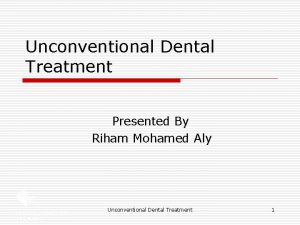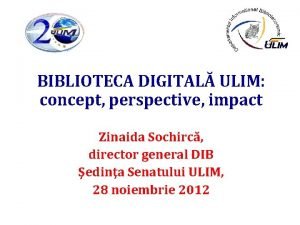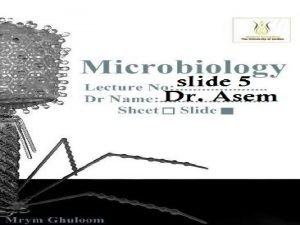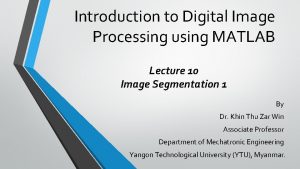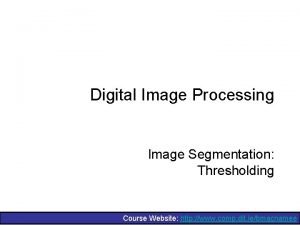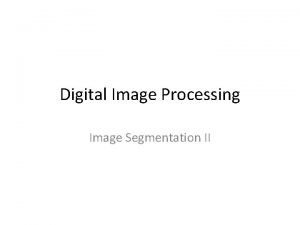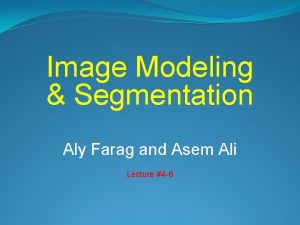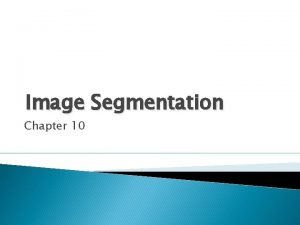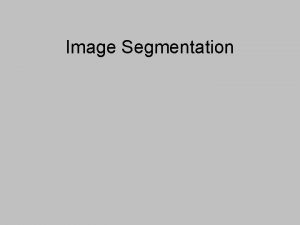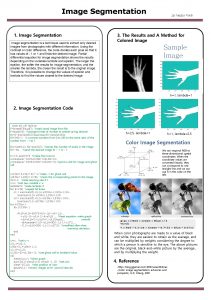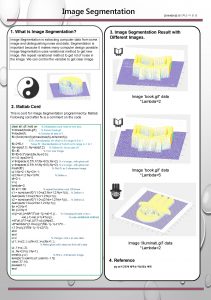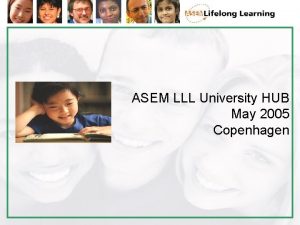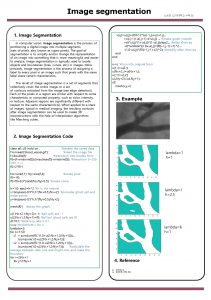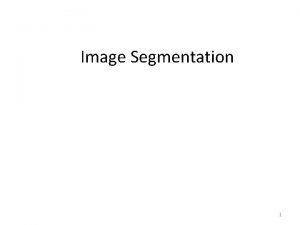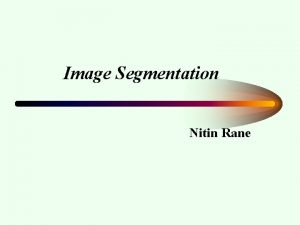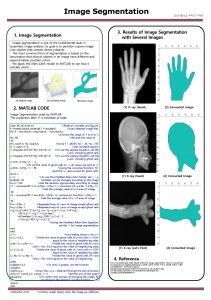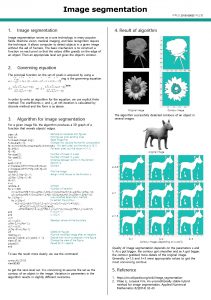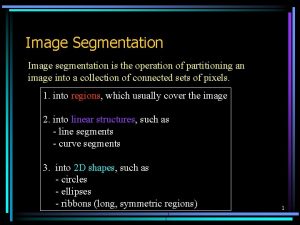Image Modeling Segmentation Aly Farag and Asem Ali

















- Slides: 17

Image Modeling & Segmentation Aly Farag and Asem Ali

Image Modeling & Segmentation Ø Introduction Ø Intensity Model. Ø Spatial Interaction Model. Ø Segmentation Framework.

Introduction

Introduction Image Ø Is a graphic representation of a scene in 2 D/3 D discrete spaces. Ø Is stored as a raster data set of integer values Ø These values represent the intensity of reflected light, heat, or other range of values on the electromagnetic spectrum. Ø Location of each measurement is a “image element” called a pixel/voxel. Object or class in an image is represented by a group of pixels. Image Pixel Object / Class Camera Light Scene Image 4

Examples RGB Introduction

Introduction Examples Depth

Examples Thermal Introduction

Examples Introduction 2 D video frame of a real 3 D scene X-ray image CT slice Remotely sensed image Ultrasound image 8

Introduction What is the information in the image? And how can it be mathematically modeled? Image Modeling: is to quantitatively specify visual characteristics of the image in few parameters so as to understand natural constraints and general assumptions about the imaging process The following information that could capture the visual characteristics Ø The distribution of the intensity in each object. Ø The interaction between the pixels in each object. Ø The shape of the objects. 9

Introduction Image Modeling Intensity Model gray level histogram Binary Image 10

Introduction Image Modeling Spatial Interaction gray levels histogram Binary image Human brain uses “contextual information” by assuming that the true color of a pixel depends on the colors at spatially neighboring Try reading this! The phaonmneal pweor of the hmuan mnid, it deosn't mttaer in waht oredr the ltteers in a wrod are, the olny iprmoatnt tihng is taht the frist and lsat ltteer be in the rghit pclae. Contextual information: eliminate ambiguities, correct errors, recover messing information 11

Introduction Image Modeling Shape In some cases, image non-homogeneities are outside the domain of uniform spatial interaction Adopted Cremers’ 02 12

Introduction Image Modeling Intensity Spatial Interaction Image Segmentation Shape Others 13

Introduction Image Segmentation v Partitioning of an image into non–overlapping, connected regions which are homogeneous with respect to some characteristic such as intensity or texture. v Extract the major components intracomponent variations. of scene while ignoring small v When the constraint that regions be connected is removed, the proposed approach is called pixel classification Segmentation 14

Introduction Segmentation Methods v Threshold techniques: make decisions based on local pixel information, are effective when the intensity levels of the objects fall outside the range of levels in the background. v Edge-based methods: detect contours around objects, then connect together broken contour lines. These method are too prone to failure in the presence of blurring. v Region-based methods: the image is partitioned into connected regions by grouping neighboring pixels of similar intensity levels / texture. Adjacent regions are then merged under some criterion (homogeneity or sharpness of region boundaries). 15

Introduction Segmentation Methods v Markov random field models: allow for taking account of spatial interaction between adjacent or nearby pixel signals for image segmentation. are typically used to take into account the fact that, most pixels belong to the same class as their neighboring pixels. o If the strength of spatial interaction is too high, it may result in an excessively smooth. If it is too low, it may result in some holes in the segmented object v Deformable models: delineate region boundaries using closed parametric curves that deform under the influence of internal and external forces. o. The main advantages are robustness to noise and spurious edges. disadvantage is that they require manual interaction to place an initial model 16

Image segmentation Homework #1 Read the following image segmentation introduction http: //lmb. informatik. uni-freiburg. de/lectures/segmentierung/Intro. pdf and answer these questions: 1. Define the image? 2. Pixel values can represent different measurements such as brightness, and what? 3. What is the difference between image classification and image segmentation? 4. What are the basic techniques for image segmentation? 5. What are the different types of model-based image segmentation approaches? 6. Mention the disadvantages of threshold-based image segmentation approach? 7. Explain the main idea of the region growing-based image segmentation approach? 8. What are the major classes of the deformable models and their formulations? 9. Define the image modeling? 10. What are the different information that we can model in images?
 Riham mohamed aly
Riham mohamed aly Pondok pesantren di weru sukoharjo
Pondok pesantren di weru sukoharjo Key stages in digital image processing
Key stages in digital image processing Modeling and role modeling theory
Modeling and role modeling theory Soma farag
Soma farag Oszust z asem karo
Oszust z asem karo Asem lll hub
Asem lll hub Asem biblioteca digitala
Asem biblioteca digitala Asem swim fast can
Asem swim fast can Asem swim fast can
Asem swim fast can Asem barcelona
Asem barcelona Streptococcis
Streptococcis Relational modeling vs dimensional modeling
Relational modeling vs dimensional modeling Image-based modeling
Image-based modeling Segmentation in digital image processing
Segmentation in digital image processing Segmentation in digital image processing
Segmentation in digital image processing Image segmentation course
Image segmentation course Filteration
Filteration
